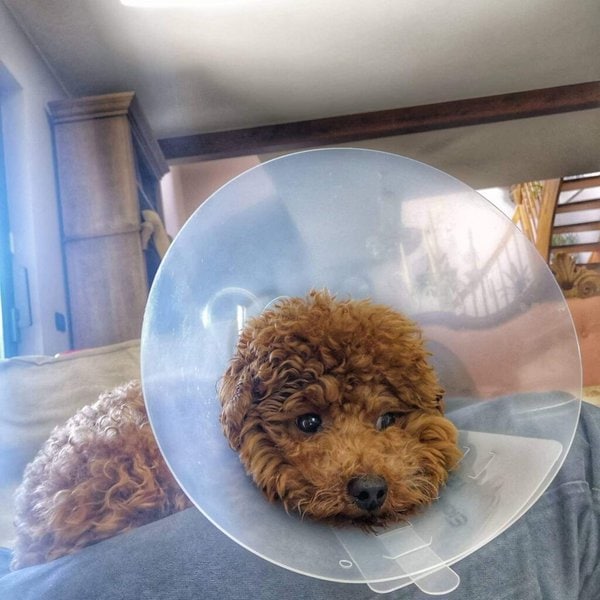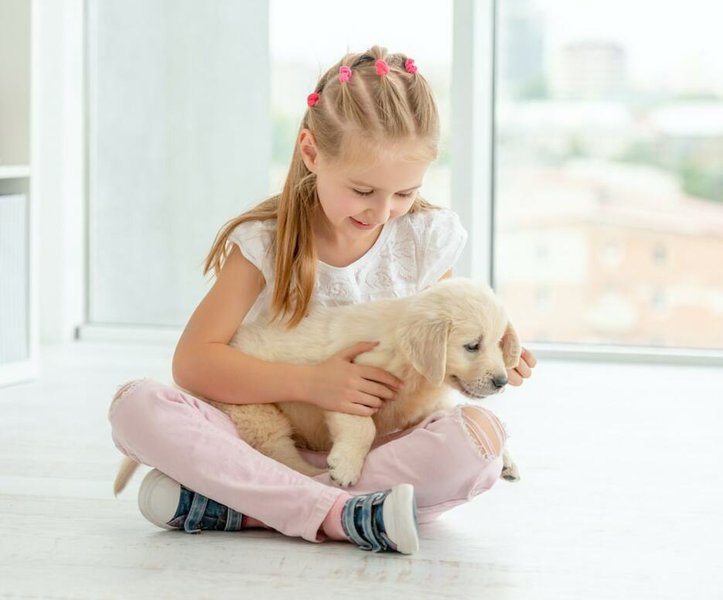Purchasing and bringing up a puppy can be quite the daunting experience, especially if you have no prior experience with raising dogs. And this is why we’ve created this article as a refresher course for raising puppies, and putting your young fido on the right track to enjoying adulthood.
Now, how do you take care of a puppy for beginners? Taking care of a puppy for beginners involves creating a safe and comfortable space for the pooch to thrive in, forging a strong, happy bond with the puppy and paying special attention to the puppy’s physical and emotional needs.
Of course, the above is just a brief summary, and raising a puppy goes way beyond what has been outlined in the previous paragraph. Luckily, we’ve covered a major part of what you need to know as puppy parents in this article, and this includes aspects such as feeding and medical care. However, before we go further, let’s see what typically happens that first day you introduce a puppy to its new home.
What Happens The First Day You Bring A Puppy Home?
The first day you bring a puppy home is when the pooch begins bonding with you, your family members and other pets. And to make this process easier, you should ensure that the home environment is as stress-free as possible for the pooch.
Once you bring a puppy home for the first time, you should allow the young Fido explore a limited area of its new environment, while keeping a close eye on proceedings to prevent accidents.
And while your puppy explores its new environment, you can then gradually introduce it to other family members. Avoid introducing toddlers to your new puppy on the first day, as an excited toddler will most likely scare the pooch.
If you have other pets, it is quite important that you devote time and attention to them as well, to avoid creating feelings of jealousy and hostility towards the new puppy. Gently introduce your new puppy to your other pets, and monitor interactions to prevent aggressiveness towards the young Fido.
Avoid contact between your new puppy and dogs that don’t belong to your household for the first few days or weeks.
It is also important that you start enforcing house rules from the very first day, and you should also introduce the puppy to its designated potty spot on day one.
How To Choose A Puppy?
The choice of a puppy is the first important decision you have to make, once you’ve decided to bring a Fido into your home.
Before choosing a puppy to be introduced to your family, there are several questions you need to answer to be sure that you’re getting a pooch that will adapt to your style of living.
That said, some of the questions you need to provide answers to include:
- Do you prefer a purebred or a mixed dog?
- Do you want a big or small dog?
- Can you provide sufficient exercise for the dog?
- Can the puppy live comfortably in your house or apartment?
- Will you adopt or buy a puppy from a breeder?
Also, other factors that should influence your choice of a puppy include potential health issues, temperament, personality, grooming requirements and purpose.
What Should You Do Before Bringing A Puppy Home?
Once you’ve settled on a choice of puppy, there are several measures you should implement before bringing this puppy home and these include:
- Creating a schedule and preparing a space for the puppy to play
- Providing crates and cozy beds in locations where the puppy can rest without disturbance
- Screening your home for, and getting rid of substances that can be harmful to the puppy; These include electrical cords, breakable items and toxic substances
- Acquiring the essential puppy supplies such as the drinking and feeding bowls, bed, leash, collar, grooming tools, chew and play toys, and a crate or kennel
It can also help to bring along a blanket with a scent familiar to the puppy from its previous home, to serve as a source of reassurance and comfort.
Also, before bringing a puppy home, you should ensure that the pooch has received the appropriate vaccination and has begun basic socialization training by being introduced to new sights and people.
Regardless, you should make further arrangements with your vet to ensure that your new puppy receives the necessary vaccination that will enable it to lead a long and healthy life.
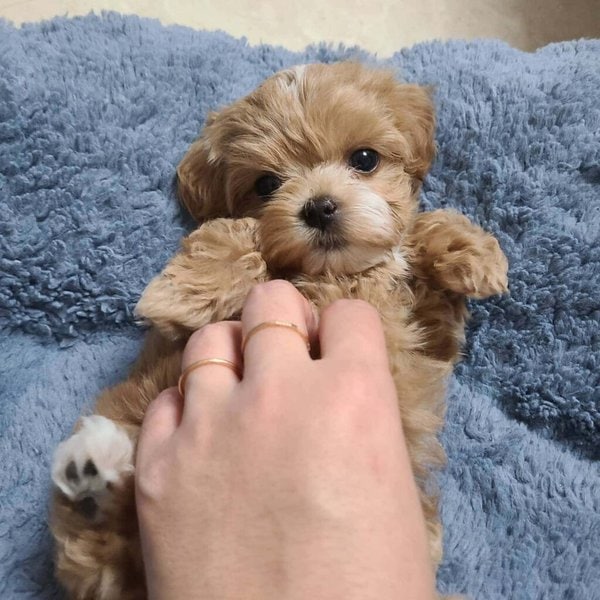
How Long Should Puppies Stay With Their Mother?
Ideally, it is recommended that newborn puppies stay for up to 8 weeks with their mother before they are separated.
While it is true that puppies are capable of developing a strong sense of independence and taking care of themselves at a relatively early age, prematurely separating a pup from its mother and litter can be detrimental to the pooch’s development.
The mother dog has a lot to teach a puppy during the first few weeks of its life, and early interactions with littermates is key to moulding a pooch’s behavior for the rest of its life.
Additionally, younger puppies are usually not ready to be housetrained. And if you prematurely bring a newborn puppy home, you should be ready to clean up after the pooch at all times.
That said, most breeders advise that puppies should be left with their litter for between 6 to 10 weeks, with the average separation time falling at 8 weeks after birth. Toy dog breeds are quite fragile as puppies, and breeders tend to keep these pooches longer than what is obtainable with regular sized dogs.
Why You Shouldn’t Separate A Puppy From Its Mother Too Early?
Several studies have linked the development of several behavioral issues in puppies to a premature separation from their mother and litter. And some of the issues that typically accompany premature puppy separation include:
- Attention seeking behavior
- Fearfulness
- Extreme possessiveness of food and toy
- Destructive behavior
- High level of sensitivity
How Long Can A Puppy Be Left Alone During The Day?
Puppies need to be in constant touch with their families, especially during the first few months of their lives. And it is highly recommended that you don’t go without interacting with your puppy for more than two hours.
As puppies grow older, you can leave them for longer periods without problems. But during the tender, early stages, if you must really be away from your pooch, then it is recommended that you employ the services of a professional pet sitter or keep your pup in a doggie day-care.
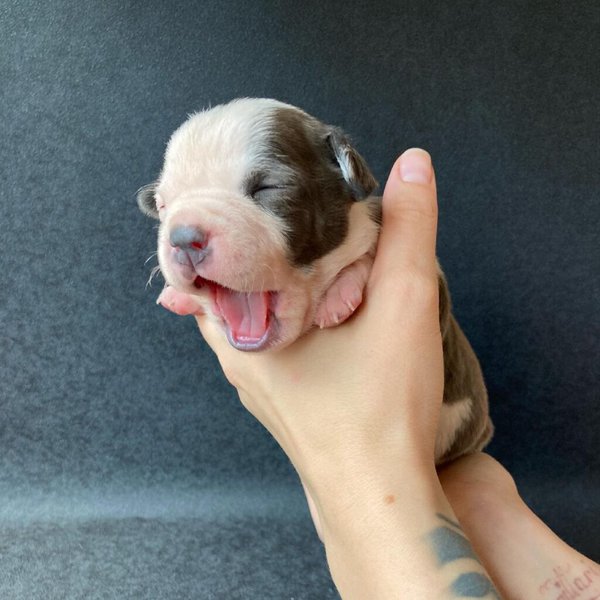
How Do I Bond With My New Puppy?
You can bond with your new puppy by creating a safe, comfortable environment, being gentle when talking with the puppy, and reacting to the puppy’s cries. Additionally, feeding, grooming, playing with and training your puppy are excellent ways of creating a strong bond with the pooch.
Before you introduce a new puppy into your home, it is important to create a safe space to help the pooch feel more comfortable in its new environment. And by creating this safe space, you’re also making it easier to forge a strong, unbreakable bond with your puppy, which will result in a lifetime of great memories as the pooch grows.
That said, some of the ways you can bond with your new puppy and the benefits of engaging in such activities include:
Be Gentle When Talking To The Puppy
Avoid speaking to your puppy in harsh, loud voices, as this will only create a feeling of distrust, make the pooch scared of you, and consequently, complicate the bonding process.
Speak to your pooch in a warm, gentle tone, and positively reinforce good behavior by conveying your emotions in happy, excited tones.
Frequent Petting
You can also forge a strong bond with your new puppy by fondly rubbing on parts of its body, head and legs throughout the day. And apart from creating a bond with your new puppy, frequent petting also gives the pooch the feeling that it is loved.
Always Tend To Your Puppy’s Cries
Immediately you purchase or adopt a puppy, you’re assuming the role of surrogate parent. And to deal with the separation anxiety that typically accompanies a puppy moving into a new home, you should be very attentive to the puppy’s crying and whimpering by providing attention and warmth.
We also recommend Thundershirt Classic Dog Anxiety Jacket, if you feed a need to aid your puppy in overcoming its anxiety triggers such as being away from home due to work or while running errands, and thunderstorms. The jacket also provides additional comfort with its soft and breathable fabric.
By showering a new puppy with attention and love, you’ll be making the pooch feel comfortable, and this results in the formation of a strong bond between you two.
Feeding
Puppies tend to develop a positive association between food and the person who brings their meals; Hence, feeding is also a great way of forging a strong bond with your new puppy.
It is also important that you involve other family members in this feeding process, to facilitate the creation of bonds between your puppy and the said family members.
Grooming
The importance of grooming a dog can’t be overstated, and by taking time out to regularly brush and carry out other maintenance activities on your puppy, you’ll be creating a strong bond with the young fido.
It is also important that you carry other family members along in this grooming process, as a puppy will bond with those that frequently groom it.
Play And Exercise
Taking time to play games such as fetch and hide-and-seek will help you get closer to your puppy, and it is a great way of bonding with the pooch.
Additionally, by frequently taking your puppy on walks or engaging the pooch in other forms of exercises, you’ll be building a strong connection with the puppy.
It is important that you maintain a positive and happy outlook while playing with your puppy, so that the pooch can associate the joy that comes with playing to you, thereby creating a stronger bond.
Training
Training activities can also be a great way of creating a sense of teamwork between your puppy and you, thereby leading to you and the pooch getting inseparable over time.
How Do You Tell If A Puppy Has Bonded With You?
Puppies trust easily, and it may take a young pooch any period from between two days to two months to get used to their new owners. This is just a general duration though, and it may take a puppy longer to get used to you, especially if that pooch has suffered abuse in the past.
That said, some of the signs that a puppy completely trusts and respects you include:
- Willingness to carry out commands without hesitation
- A desire to be constantly near you
- Keeping tabs on your location
- A desire for constant physical interaction
- High-level of focus on you, which is evidenced by the pooch readily making eye contact with you
- Sleeping in your bedroom
- Visible signs of happiness when you come home after being away for long
- Frequently bringing you its favorite toys, and many more
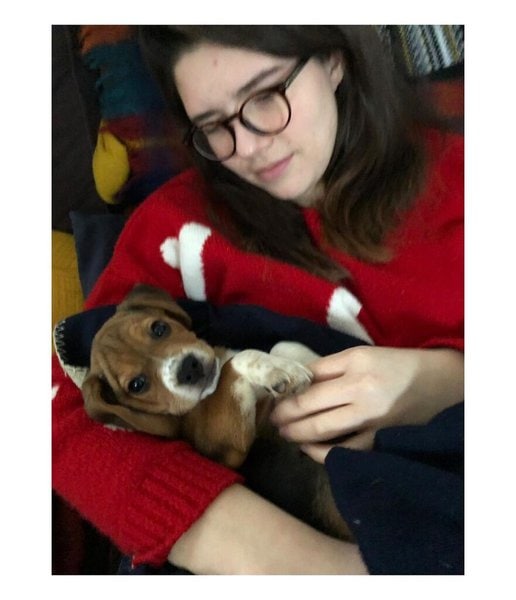
Puppy Feeding Guidelines – How Much Food Do You Give A Puppy?
The amount of food you should give a puppy is largely influenced by the puppy’s age and size.
It is recommended that you start feeding a puppy with solid food from when the pooch is four weeks old. And this is because the puppy stops getting sufficient calories from its mother’s milk around this age.
And when eventually you start feeding your puppy solid food, you should pay close attention to labels on food bags as they typically provide specific instructions on how much you should feed a puppy, depending on its weight.
How Many Times Should You Feed A Puppy In A Day?
The general guideline on the number of times a puppy should be fed in a day, based on the pooch’s age is given below:
- From six weeks to three months old – three or four times daily
- From three months to five months old – three times per day
- Five months and above – twice daily
What Should You Feed A Puppy?
When raising a puppy, you have the option to feed the pooch either dry kibble, canned wet food, homemade meals or a raw diet. Puppies grow at a fast pace, and feeding a pooch the appropriate meals at this early stage is fundamental to ensuring
Regardless of whatever option you choose as your puppy’s main food, the ideal diet for a new puppy is one that contains a generous amount of high-quality proteins from animal-based sources such as chicken, fish, lamb and beef.
Apart from being rich in proteins, high-quality dog food contains a healthy amount of vitamins, minerals and fats, and reputable products such as the Pet Plate diet should be top of your puppy feeding list.
In addition to being a great source of nutrition for your new puppy, the Pet Plate has a special customization feature which means you can submit your pooch’s exact physical characteristics to get a custom-made meal.
Additionally, you should only feed your new dog food that is specially formulated for puppies. And if you decide to place your puppy on a homemade diet, then it’s best that you enlist the help of your vet to draw up an appropriate meal plan for the pooch.
What Should You Not Feed A Puppy?
As tempting as it may sound, feeding a newborn puppy with table scraps is not the way to go, and it will only place the pooch at a higher risk of suffering from weight related issues.
Apart from steering clear of table scraps, there are some other food substances that are considered toxic to a puppy, and these include but limited to:
- Chocolate
- Alcohol
- Tea
- Garlic
- Onions
- Chives
- Grapes
- Salt
A quick glance at the food substances listed above indicates that these are food substances typically consumed by humans, which in turn, infers that you should avoid feeding your new puppy with human food.
How To Know If You’re Feeding Your Puppy Enough?
You can easily tell if your puppy is getting adequate nutrition by carrying out a simple physical assessment at home.
If you’re feeding your puppy enough, you should be able to feel, but not see the pooch’s ribs when you run your hands over its body. Additionally, puppies that are getting adequate meals will have a visible waist line when you observe their bodies.
It can also help to familiarize yourself with your puppy’s breed weight standard, and compare it to the pooch’s weight at various stages of growth and development.
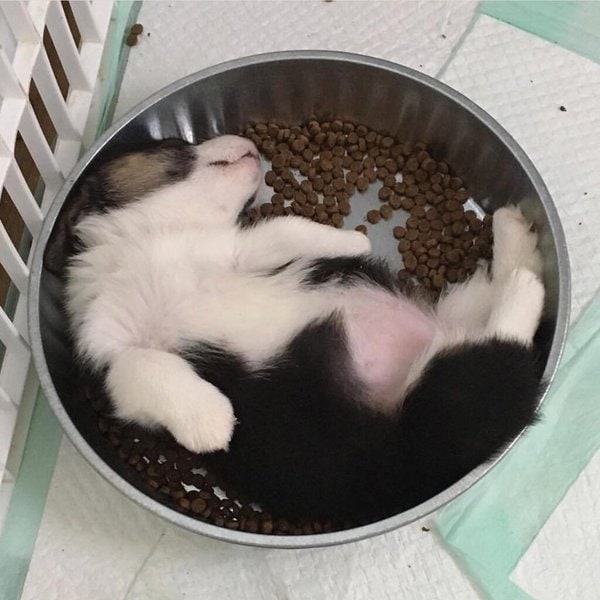
What Should You Not Do With A Puppy?
Things you shouldn’t do with a puppy include completely isolating your puppy from the rest of the world, yelling at the puppy, feeding the puppy human food, or inflicting physical pain in any form.
Additionally, you shouldn’t leave your puppy unattended for long periods and it isn’t advisable to make food available at all times.
Don’t Yell Or Inflict Physical Pain On A Puppy
Not only is yelling or inflicting pain on a puppy inhumane, you’re only teaching the puppy to find more creative ways to avoid punishment.
What you should do, instead of yelling at or hitting a puppy, is to teach the pooch what you expect it to do instead, and employ positive reinforcement to reward acts of obedience.
Don’t Feed A Puppy With Human Food
While it is undeniably tempting to feed your puppy with scraps from your plate, doing this will only encourage your pooch to continue begging for food. And you may also end up feeding the pooch a toxic food substance.
Don’t Make Food Available At All Times
Puppies will continue eating as long as food is available, and this may result in the development of weight issues and other related health problems in the pooch.
Don’t Isolate Your Puppy
Puppies, and dogs in general, are very social animals. And keeping your puppy locked indoors at all times might lead to frustration and the development of undesirable behavior in the pooch.
Don’t Shut Your Puppy In A Crate For Long Periods
First-time dog owners often make the mistake of shutting their puppies in crates for hours at a stretch, and this can result in the pooch becoming terrified and extremely introverted.
That said, you shouldn’t lock your puppy in a crate for more than 20 minutes at a stretch, and you shouldn’t ignore it if the puppy cries for attention, even when crated.
Don’t Feed Your Puppy Low Quality Food
Feeding your puppy high-quality, well processed dog food is important to ensure healthy development of your pooch. Avoid feeding your puppy generic or low-quality dog food as this typically leaves the dog exposed to several health conditions.
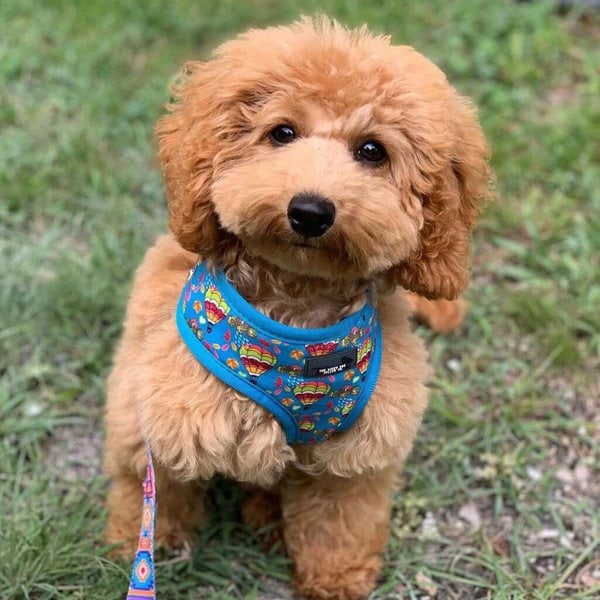
Where Should Your Puppy Sleep First Night?
Your puppy should spend its first nights at home in a small sleeping crate kept in close proximity to your bed.
You can expect your new puppy’s first few nights at home to be quite a noisy affair, as the pooch gets to terms with its new surroundings.
The new puppy will mostly howl, whine and may even scratch the door all through the night, in an attempt to be reunited with its mother and litter. And regardless of how noisy the puppy gets, you shouldn’t leave the puppy to cry all night.
Most new dog owners make the mistake of moving a new puppy out of earshot to get some shuteye. But this only makes the puppy even more scared, and you can expect its cries to increase in intensity.
What you should do instead, to calm a new puppy, on its first nights at home, is to bring such a puppy closer to where you’re sleeping to create a sense of security. You can either place the puppy in a carrier beside your bed or leash the pooch to your bed.
It can also help to place a shirt/blanket that has your scent near the puppy. And by doing this, you’re gradually creating a strong bond with the puppy, in addition to making the pooch feel safe.
Should Puppies Sleep With You?
You shouldn’t let a new puppy sleep in the same bed with you, and the reasons for this are not far-fetched.
One, puppies are quite fragile, and when you let a young pooch sleep in the same bed with you, there’s every chance you can roll over and seriously hurt the doggie during the night.
Additionally, by encouraging your puppy to sleep in the same bed with you, it will become increasingly difficult to get the pooch to sleep elsewhere as it grows and gets bigger.
At What Age Do Puppies Sleep Through The Night?
Depending on the breed of dog you have, most puppies will begin to sleep through the night once they clock 16 weeks of age, and above.
Also, spending between 20 to 30 minutes playing with a puppy before bedtime will tire the pooch out, and ensure that it gets a sound night’s rest.
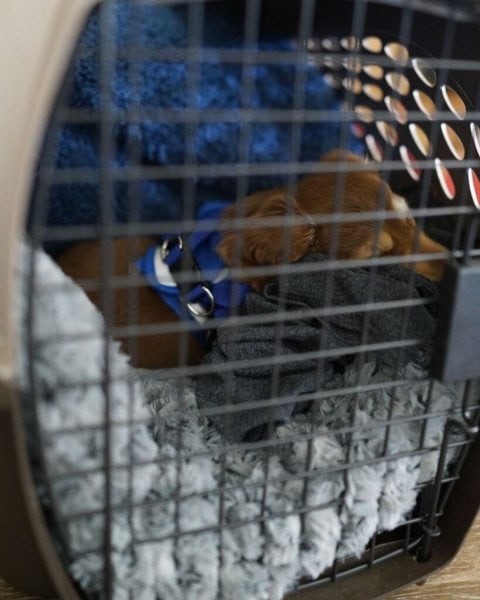
Learn To Read The Danger Signs – How Do You Know If A Newborn Puppy Is Dying?
Signs that are typically observed when a newborn puppy is dying include failure to gain weight, continuous crying by the puppy, breathing difficulties, excessive salivation, and diarrhea among others.
The early stages of a newborn puppy’s life are quite critical in determining how the rest of the pooch’s life will pan out. And given that newborn puppies are quite vulnerable to a lot of things, a considerable amount of these pooches fail to make it past 12 weeks of age!
Why Do Puppies Die Early?
As inferred earlier, early or sudden death among newborn puppies is a common occurrence that is commonly referred to as the fading syndrome.
Early death among newborn puppies is caused by a myriad of reasons. But the most common cause of fading in a newborn puppy is, arguably, the development of various health conditions by the puppy either when it is still in the uterus, during the birth process or while the pooch is being weaned.
Other prevalent causes of early deaths among newborn puppies include:
- Development of birth defects such as a weak heart
- Viral and Bacterial infections such as Parvovirus, Distemper, Staphylococcus and Streptococcus
- Abnormally low weight at birth
- Inadequate and unhealthy milk production by the mother
- Presence of intestinal parasites such as hookworm
- Inadequate care from the mother, especially for puppies that are the runt of the litter
How To Know If Your Newborn Puppy Is Dying?
Signs typically exhibited by fading puppies are listed below:
- Unhealthy weight at birth
- The mother ignores the puppy when feeding and grooming its littermates
- The puppy becomes restless and vocalizes excessively
- Tendency to separate from the litter and lie alone in a corner
- Breathing difficulties
- Abnormally low body temperatures
- An inability to suckle
- Seizures
That said, most of the symptoms listed above typically occur between 24 to 48 hours before the puppy dies; Hence, why you should call your vet immediately if you notice any of the signs in your newborn puppy.
What To Do If A Newborn Puppy Is Dying?
Call Your Vet
The fading symptom in a puppy is a medical emergency that requires urgent attention to prevent the young pooch from losing its life. And immediately you notice the manifestation of any of the symptoms listed above in your puppy, the next course of action is to call your vet and book a medical appointment.
You should pay attention to, and be ready to report the symptoms you’re observing to your vet, as this will help determine whether or not your puppy requires specialized care.
In most cases, the vet will have you bring in the mother dog and the entire litter in for medical examination. And once at the hospital, the vet will examine the fading puppy for signs of infection, birth defects or any other medical condition that commonly causes deaths among newborn puppies.
Treatment for the fading puppy depends on the outcome of these examinations. And the prescribed treatment typically ranges from medical procedures to treat underlying medical conditions to simple home care.
Keep The Puppy Warm
Keeping a fading puppy warm, before appropriate medical attention, is crucial if you’re to extend and maintain your furry friend’s life.
A fading puppy with a dangerously low body temperature should be warmed by hugging the pooch against a warmer human body till the pooch becomes lively again. Warming a chilled pup too quickly can be dangerous, and this will only complicate issues further.
Additionally, fading puppies should be separated from the rest of the litter and placed in a special litter box with a heating pad to regulate body temperature. And it is important that you monitor this box from time to time, to ensure that it doesn’t get too hot for the puppy.
Keep The Puppy Hydrated
To treat dehydration in a fading puppy, you should feed the pooch a mixture of ½ teaspoon of salt, 2 teaspoons of sugar and 2 teaspoons of honey mixed in a cup of warm boiled water. This mixture should be fed to the puppy with an eyedropper at short intervals.
Feed The Puppy Colostrum
If you observe that a fading puppy isn’t being fed by its mother, you should jump in and make sure that the pooch gets this highly nutritious milk to ensure its survival.
You can either feed the fading puppy with supplemental colostrum or attempt to extract some milk from the mother and feed it to the young pooch with an eyedropper. Additionally, it may help to separate the rest of the litter from the mother dog to ensure that the fading puppy gets a chance to suckle.
